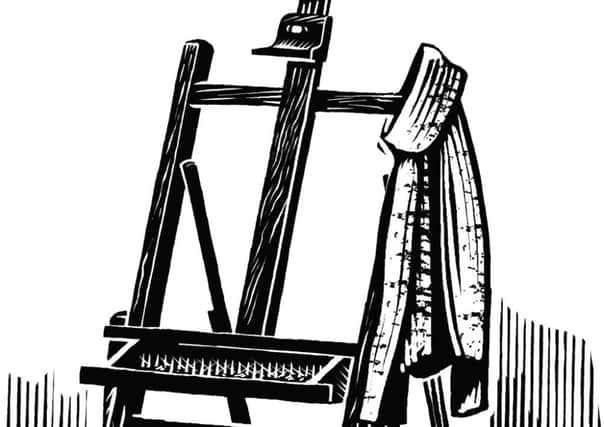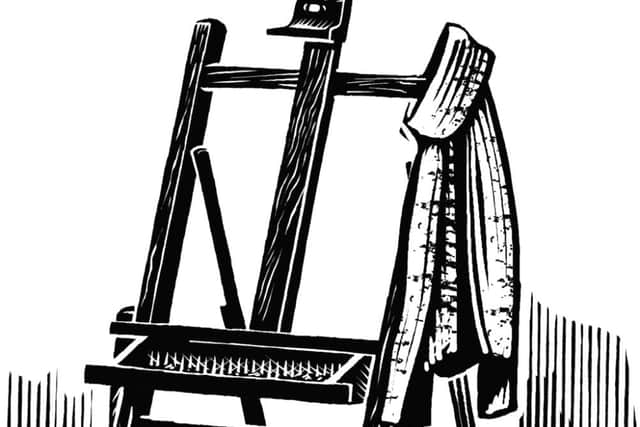44 Scotland Street: The ethics of portraiture


Over the years, Angus had acquired a reputation as one of the most sympathetic portrait painters in Scotland. This sympathy was for his sitters, with whom he usually developed a strong rapport even in the earliest minutes of the first sitting. Having a portrait painted is a potentially stressful experience for anybody: How will I look? Will both my chins be painted? Will I appear older than I am? Will I look ridiculous? These are the questions that even the most selfless, least egotistical sitters will ask themselves, for, after all, who does not hope to be remembered in the best possible light? Who, if given the choice, would not opt to be portrayed at sixteen rather than at sixty? Who does not have at least some feature, some minor imperfection perhaps, that he or she would not want at least softened, if not totally obscured, by a more forgiving rather than a harsher light?
The fact that Angus was so gentle in his treatment of his sitters meant that they relaxed and, in the ensuing state of trust, allowed their true personality to emerge. In most cases he judged this true personality to be benevolent, but even where the qualities that emerged were unattractive, Angus was still inclined to play these down and to look for something positive in an otherwise unpromising personality.
Advertisement
Hide AdThis could give rise to a challenge, as it did when he was asked by a Glasgow industrialist to paint his fourteen-year-old son, a boy whose dismaying appearance would be difficult to disguise. The diplomatic problem was exacerbated by the fact that the father looked very much the same as the son – both were of simian appearance, with heavy, beetle brows, wide mouths, and the flared nostrils usually found on chimpanzees. They had come to see Angus in Edinburgh, father and son, visiting him in his studio.


“They say my boy is very much a chip off the old block,” said the father, smiling with pride. “And I suppose when I look at the photographs of me as a youngster I can see it too.”
Angus made a non-committal response.
“He’s a keen tennis player,” went on the father. “Maybe you could paint him on the tennis court, about to serve.”
Angus stared at the boy, who was sitting awkwardly in his studio chair. The similarity to a monkey was quite striking, he thought. Perhaps he could be painted sitting in a tree, or foraging for berries, as chimps do …
“What’s that stink?” the boy suddenly asked. “There’s a real stink here.”
Rather than reproaching his son, the father sniffed at the air, his already copious nostrils widening even further.
“I can’t smell anything,” said the father.
Advertisement
Hide Ad“Turpentine,” said Angus, glaring at the boy. “I use it to clean my brushes. The oil paint, you see, would dry on them if I didn’t and then the bristles would be ruined.”
“See,” said the father. “You see, Billy, that’s something you’ve learned already. You come through to Edinburgh and you learn something.” He laughed. “And the other way round, of course.”
Advertisement
Hide Ad“Hah!” said Angus. And it was then that a possibility occurred. “Tennis,” he continued. “You know, that’s a rather intriguing idea. A portrait of Billy playing tennis would be rather interesting – rather like Raeburn’s picture of the Skating Minister.”
“You hear that?” said the father. “That picture we saw in the National Gallery of the minister on his skates – remember it?”
The boy nodded vaguely.
“And I think,” said Angus, coming to the point of his idea, “that it would be best to paint Billy from behind, just as he’s tossing the ball up into the air for his serve. It could be a powerful portrayal of the … of the sheer physicality of the game – the power of the serve. Beyond us, so to speak, would be the trajectory of the ball, the open court stretching out before him – symbolic of life’s challenges, perhaps. Billy, though, would fill the foreground with his shoulders and with his racquet up in the air ready to be brought down upon the ball.”
The father looked thoughtful. “That sounds very interesting, Mr Lordie. But would Billy be recognisable? You see, I assume that we would just see the back of his head, not his actual face.”
“You don’t need to see my face,” said Billy. “You and Mom know what I look like.”
Angus smiled. “Billy has a point,” he said. “Art does not need to be too representational. We’ve gone beyond that now.” The Devil may quote scripture for his own devices, thought Angus, reproaching himself. Perhaps he should just grasp the nettle and paint this unfortunate boy with full frontal physiognomy; the notion of painting just the back of his head was no real solution to the delicate issue of truthfulness in portraiture.
“I suppose we’ll know it’s him,” said the father.
Advertisement
Hide Ad“That will be very clear,” said Angus. “Posture is very revealing. And the cranium itself, viewed from whatever angle, is quite distinctive.”
The father’s mind was made up. “Very well,” he said. “You’ve persuaded me.”
Advertisement
Hide AdBut then Angus changed his mind. He had been sorely tempted, but this option, he saw, was meretricious to the core, and he resisted it. “No,” he said. “I don’t think that will work. I shall paint Billy more or less as we see him here – seated in my studio. I shall capture him far better that way.”
There had been three sittings, and eventually the painting was complete. Angus had not flinched from presenting his subject as he saw him, but even with that truthfulness he had somehow painted the boy in such a way that in spite of his unprepossessing face he looked appealing, caught at that odd stage of transition between childhood and youth, to all intents and purposes like a Norman Rockwell portrait for the cover of Life magazine of some freckled, optimistic boy.
The boy’s mother had cried when she saw it, and had planted a kiss on Angus’s surprised cheek.
“Dear Mr Lordie,” she whispered. “I know my son’s no oil painting but …” She sighed. “But now he is.”
Angus reflected on the truth of this statement as both metaphor and fact, and smiled in modest acknowledgement of the compliment.
FOLLOW US
SCOTSMAN TABLET AND MOBILE APPS